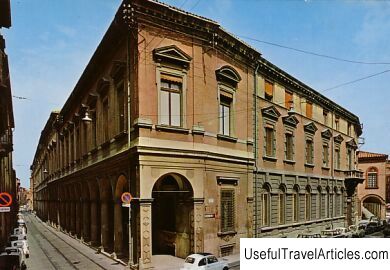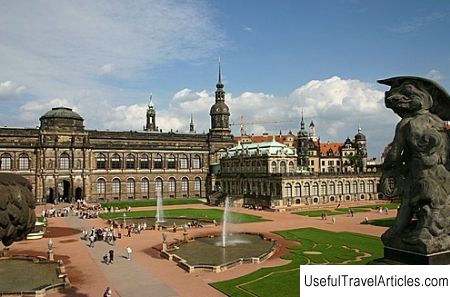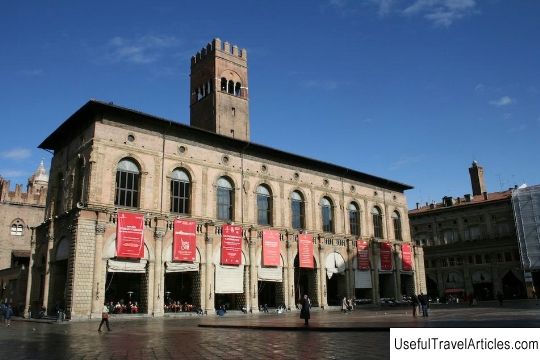Palazzo Poggi description and photos - Italy: Bologna
Rating: 7,8/10 (7905 votes) 
Palazzo Poggi description and photos - Italy: Bologna. Detailed information about the attraction. Description, photographs and a map showing the nearest significant objects. The title in English is Palazzo Poggi. Photo and descriptionPalazzo Poggi is one of the main palaces in Bologna, which today houses the Museum of the University of Bologna. This huge complex of Renaissance buildings was erected in the mid-16th century on the instructions of the Poggi brothers, Alessandro and Giovanni. It is interesting that Pope Benedict XIV also provided financial assistance in the construction. Pellegrino Tibaldi worked on the creation of the facade, although some of its parts are the work of Bartolomeo Triakini. In 1614 the Palazzo was sold to the Prince of Montecuccoli, and in 1672 it was rented by the Marquis Francesco Azzolini, who furnished the rooms with luxurious furniture. Then, for several years, the palace passed from hand to hand, until in 1711, at the insistence of the influential Luigi Marcilla, the Scientific Institute was located here. A year later, the construction of an astronomical observatory began nearby, which later became one of the largest in Europe. It was designed by Giuseppe Antonio Torri and completed in 1725 by Carlo Francesco Dotti. Well, after the temporary closure in 1803 of the University of Bologna, Palazzo Poggi housed administrative offices and various museum collections, demonstrating the most modern scientific achievements of those years. Right at the entrance to the palace there is a door leading to the auditorium named after one of the most famous natives of Bologna - the poet Giosue Carducci. It contains a small collection of articles, photographs and other documents related to the period of university history when Carducci taught there. His portraits hang on every wall - for example, the one which is located behind the teacher's table, painted in 1901. In the corner is a copy of Angelo Pio's Hercules, and nearby is a small office displaying the traditional costumes of the professors. Along the main corridor is a small patio, attributed to Triankini. In the center rises the original statue of the aforementioned Hercules. Among the decoration of the courtyard, it is worth noting the Roman Mannerist-style profiles and the pediment windows, placed at equal distances from each other. Here you can also see busts of those who in different years played an important role in the history of the university.        We also recommend reading Carlton Gardens description and photos - Australia: Melbourne Topic: Palazzo Poggi description and photos - Italy: Bologna. |




